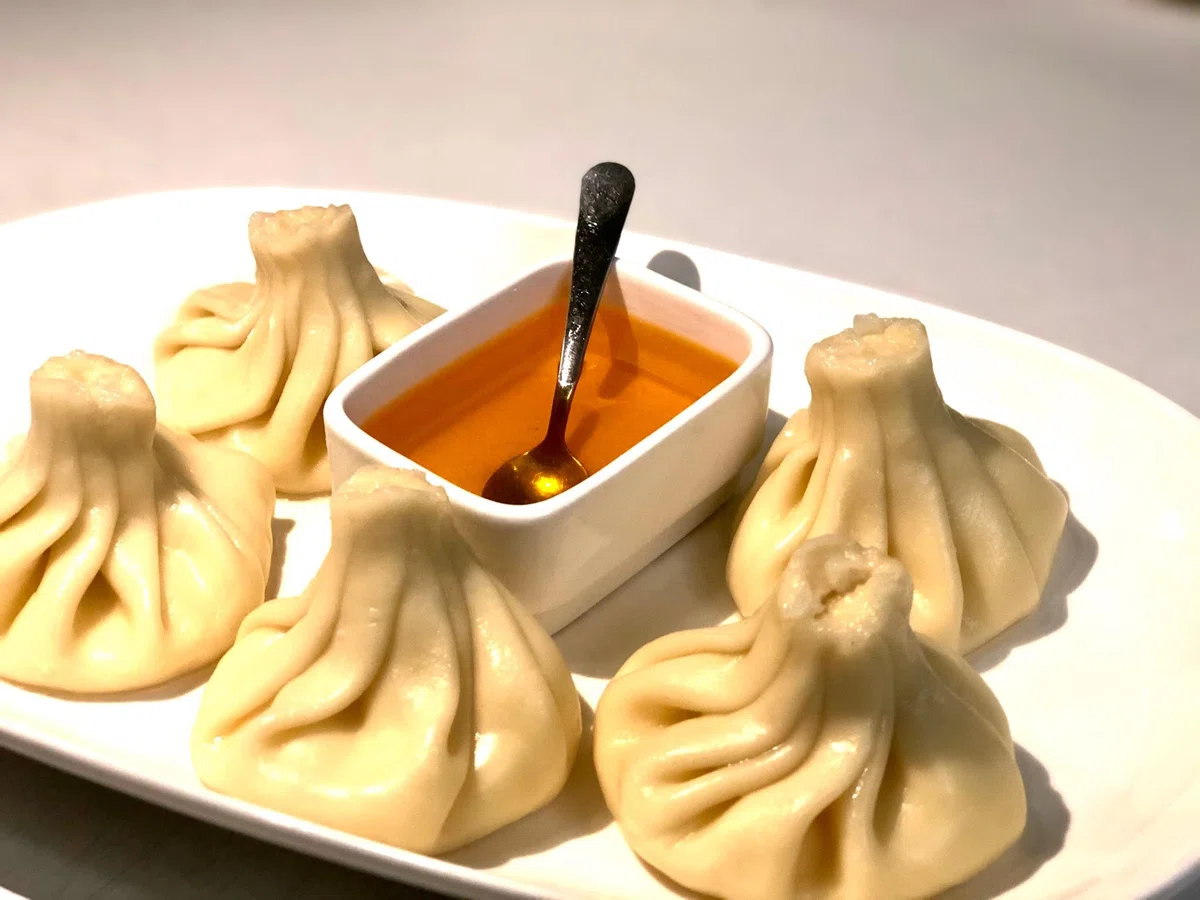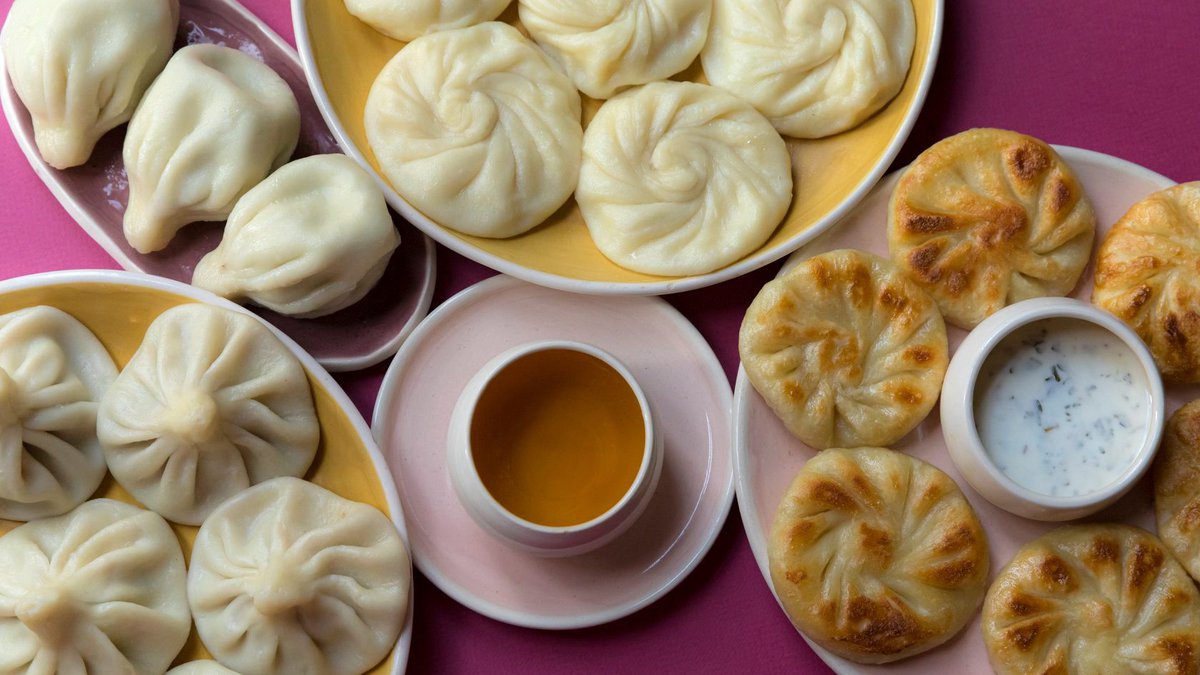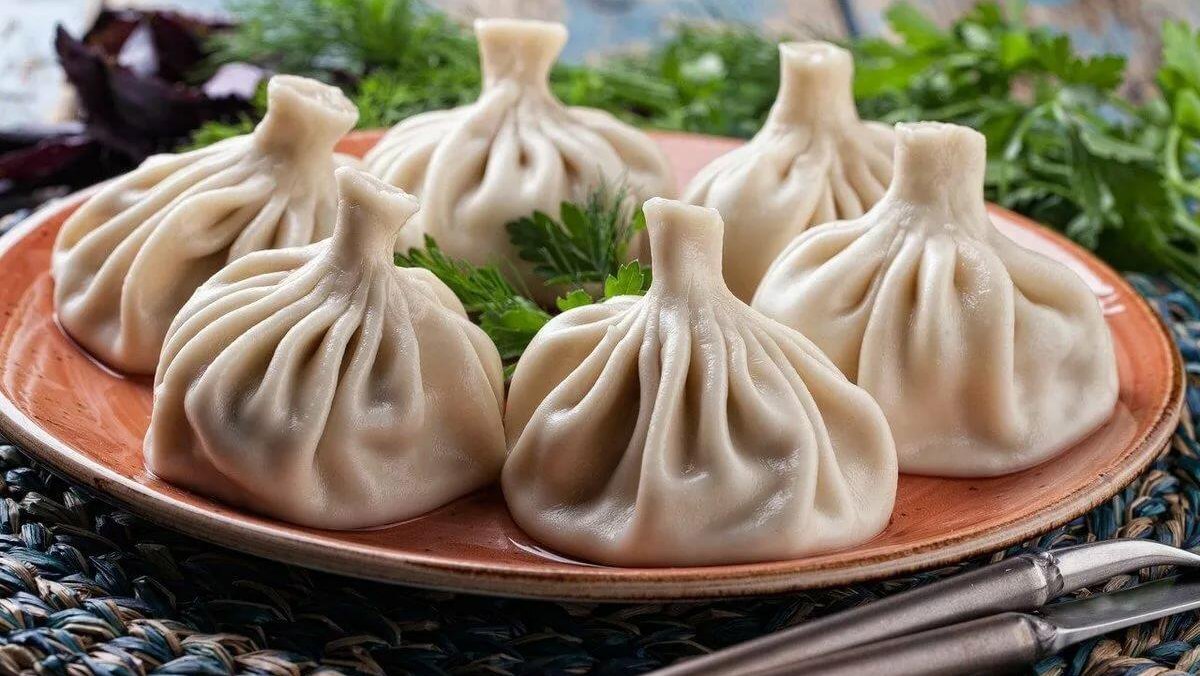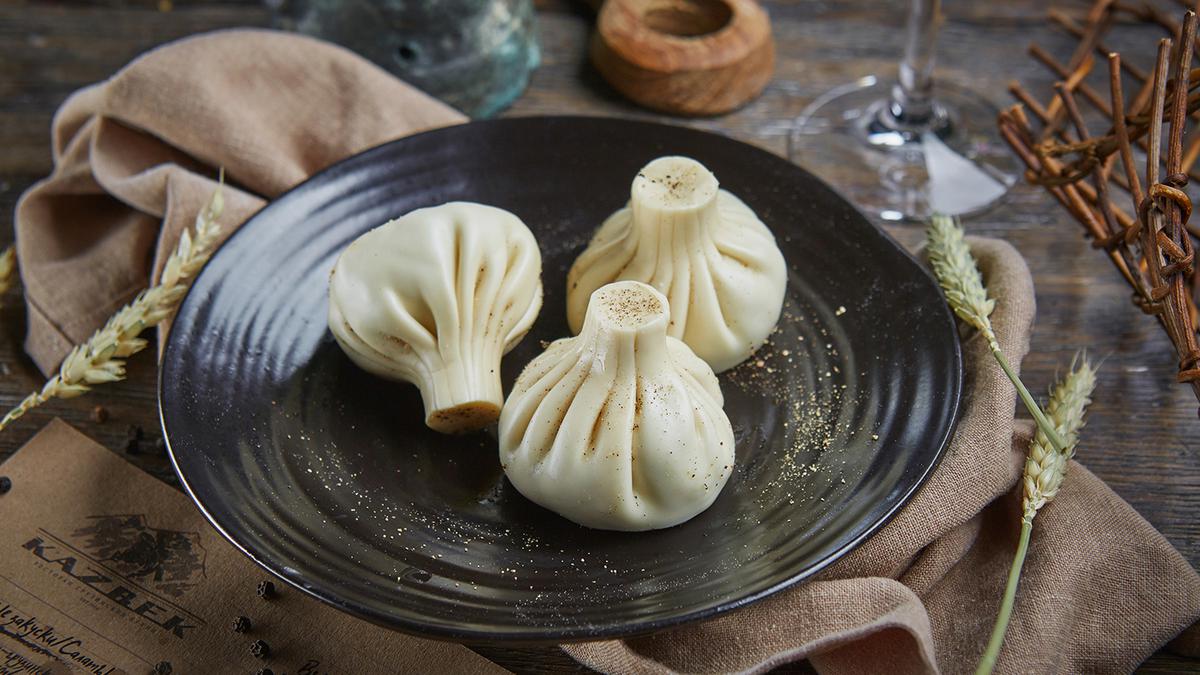
The pearl of Georgian khinkali cuisine.
How to eat khinkali - an incredibly delicious, beautiful and healthy dish will be an excellent decoration for any table and will remind you of the atmosphere of Georgia
We don't even notice that generations grow up in Sakartvelo in such a way that they have an erroneous idea of the outstanding dish of Kartvelian cooking - khinkali.
We share a similar idea with the guests of our country. The shape of the absolute majority of khinkali prepared in Sakartvelo differs significantly from the shape of traditional khinkali.
The writer Dato Turashvili called such khinkali "Soviet khinkali", also jokingly they are called "khinkali with a handle".
For "Soviet khinkali", the same khinkali "with a handle" is characterized by a very large so-called tail and it has the shape of a pouch.
As a rule, the tail of such khinkali due to its large size does not have time to cook / cook together with other parts of khinkali and is inedible.
A similar tail during eating khinkali. it has the function of a handle, the khinkali is taken and held by grasping it with your hand or sticking a fork into it.
After use for this purpose, as a rule, the tail is not eaten and thrown away. Let's remember, each of us often taught a similar "rule" of eating khinkali to our guests and at the end indicated not to eat the tail and throw it away.

According to the roughest estimates, up to 3 million kilograms of khinkali tails are thrown into the garbage in Sakartvelo every year.
There is no analogue in the world of cooking when a part of a dish, almost a third of which is edible, is thrown away. Such a culinary dish cannot be Kartvelian, due to the fact that Sakartvelo has been a land of farmers since ancient times, in which wheat, grain crops and bread were valued.
A joint ethnographic study of the Association and the National Museum of Sakartvelo, which is the first scientific study in this direction, established that khinkali are a mountain product of Sakartvelo, and they were prepared from ingredients grown by traditional farming (cattle breeding and agriculture) of the people living in the mountains - barley, rye, wheat, beef or mutton and wild mountain plants/seasonings.

Can you imagine that in the mountains, in harsh conditions, from hard-grown wheat, barley, khinkali would be wrapped and its third part would be thrown away?! Of course not!
Traditional khinkali are round and flat, they have the shape of a certain flat cake, and their tail is small, which is fully cooked and eaten with the rest of the khinkali.
Perhaps restaurants will object and say that there are not enough hands for each visitor, you have to buy mechanical equipment that stamps an elongated shape, to which I will answer that it is better not to do this at all and not mislead anyone. This is an unfair approach and a mockery of the traditions of mountain cuisine.
With the support of the "National Association of Khinkali Sakartvelo".













55 comments
Log in to leave a comment
История хинкали гораздо глубже и интереснее, чем просто «хвостик не едят». Оказывается, эти самые традиционные хинкали – они вовсе не должны быть с большим невкусным хвостом, который мы привыкли видеть и, следуя неписаным правилам, выбрасывать. Нет, друзья, традиционные горные хинкали, они кругленькие, плоские, с маленьким аккуратным хвостиком, который вполне себе съедобен.
История хинкали гораздо глубже и интереснее, чем просто «хвостик не едят». Оказывается, эти самые традиционные хинкали – они вовсе не должны быть с большим невкусным хвостом, который мы привыкли видеть и, следуя неписаным правилам, выбрасывать. Нет, друзья, традиционные горные хинкали, они кругленькие, плоские, с маленьким аккуратным хвостиком, который вполне себе съедобен.
Хотя статья короткая, она точно передаёт жизнерадостную атмосферу Тбилиси и обширный опыт местных поваров. Я была увлечена познавательной информацией о том, как правильно есть хинкали - это настоящее искусство!
После данной статьи чувствую себя просветленной. Теперь буду знать, как выглядят настоящие хинкали. Буду искать у себя в городе ресторан, где делают блюдо в традиционной форме, в виде плоских лепёшек.
Я не мог пройти мимо хинкали, одного из самых известных грузинских блюд. Это такая вкусная оболочка из тонкого слоя теста, внутри которой находится сочная начинка из мяса или сыра. Ммм...мой рот просто радует уже от одной мысли о хинкали. И конечно, нельзя забыть про грузинское вино, которое так прекрасно сочетается с этим блюдом.
Мне хочется целыми днями просто есть хинкали, пить вино. Почувствовать каждый вкусовой нюанс этого блюда и наслаждаться ароматом вина. В Грузии есть так много отличных ресторанов и таверн, где можно попробовать лучшие хинкали и отведать разные сорта вина.
Так что, друзья, какой ваш любимый ресторан в Грузии, где можно насладиться хинкали и вином? Расскажите мне о ваших гастрономических открытиях и поделитесь своими рекомендациями!
Если вы еще не попробовали эти прекрасные блюда, то обязательно их включите в планы своего путешествия по Грузии!
длины и толщины хвостика, из-за его неготовности,когда основная часть готова,его просто взять и выбросить.И сколько теста выбрасывает-
ся даром?Конечно много.И тут что-то не правильно.А оказывается мы,делаем-то не правильно.Значит моё чутье меня не подвело.Очень ин-
тересная статья,поставила бы 10 звёзд за такой познавтельный и интересный рассказ.Спасибо вам Алиса.